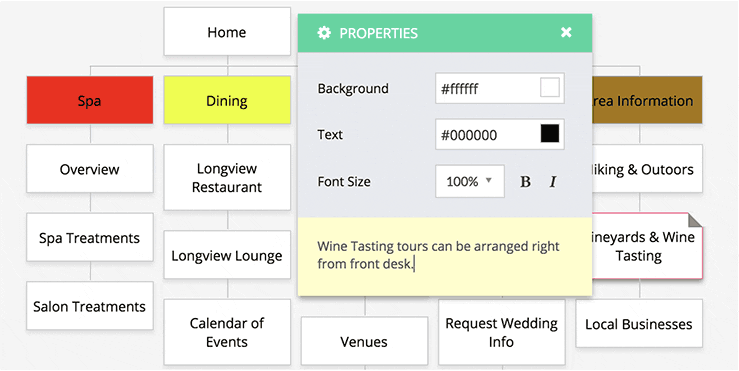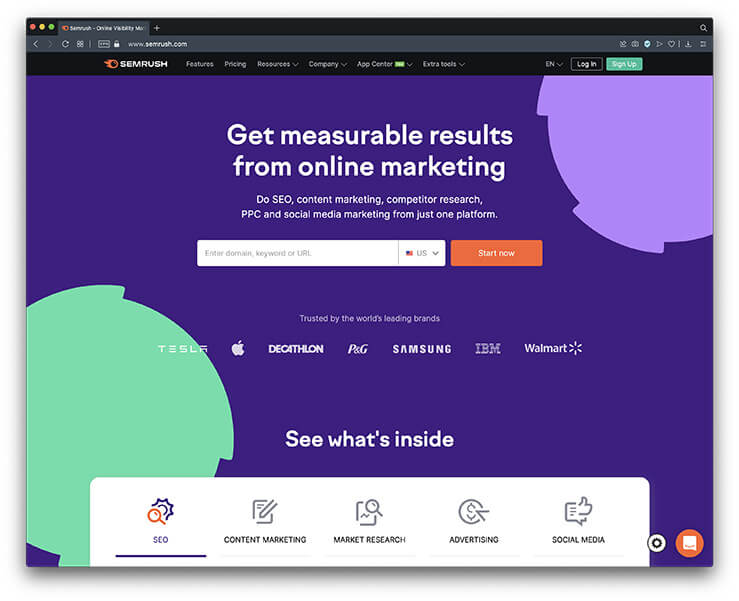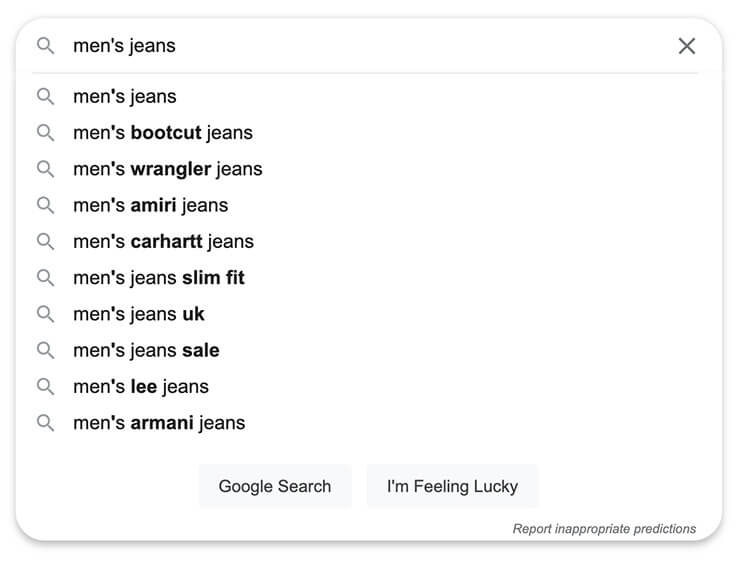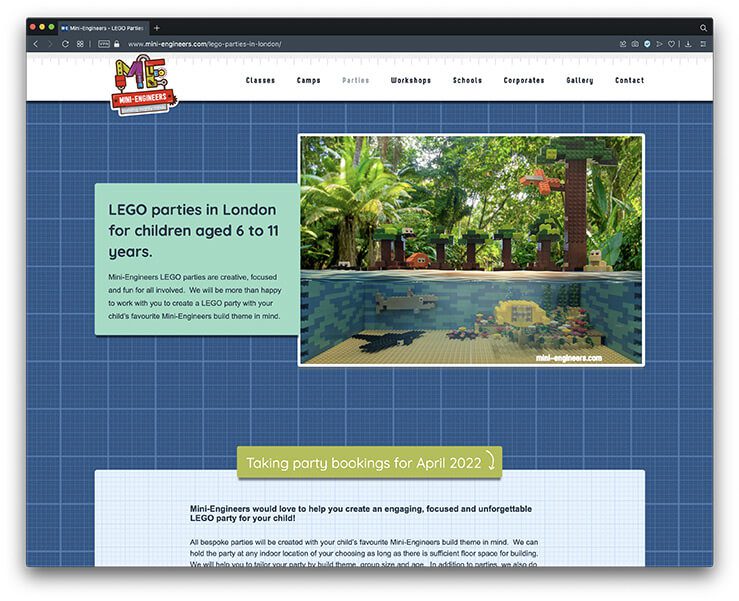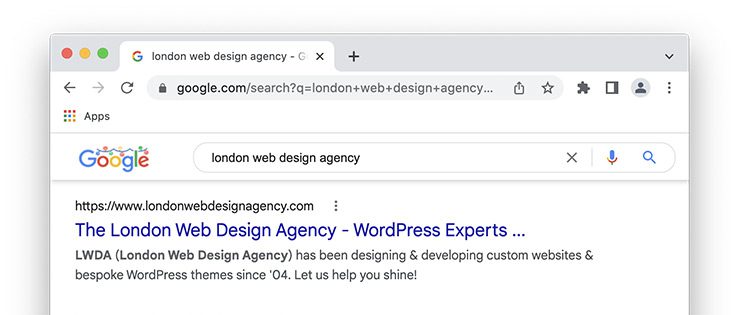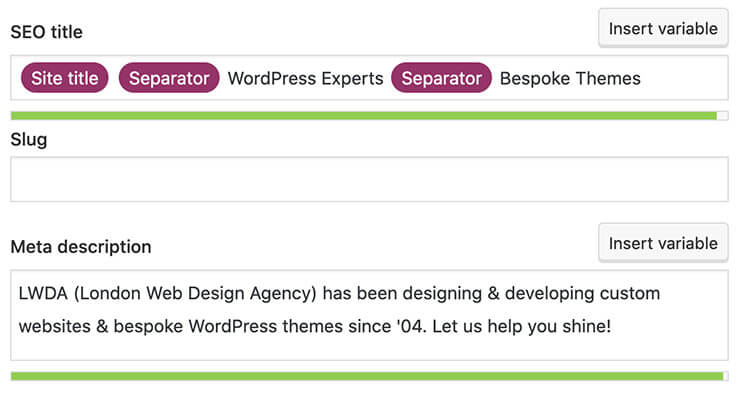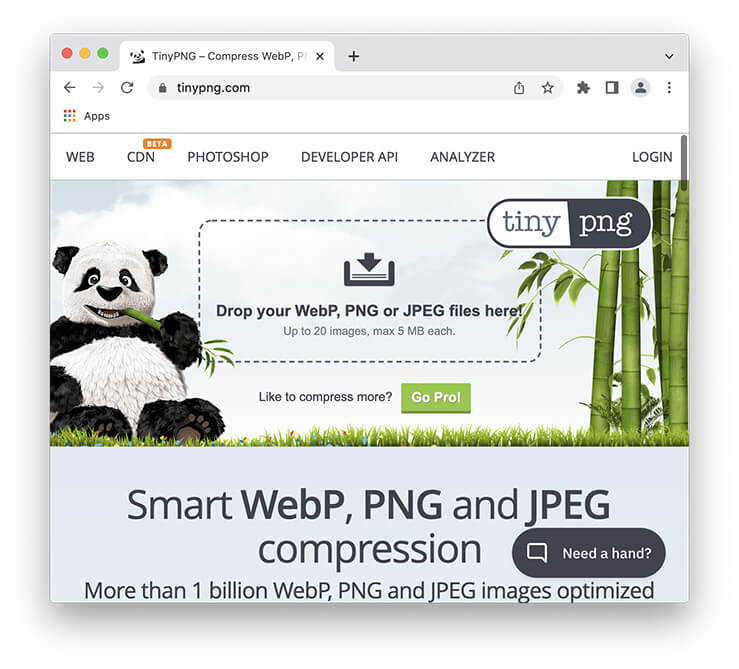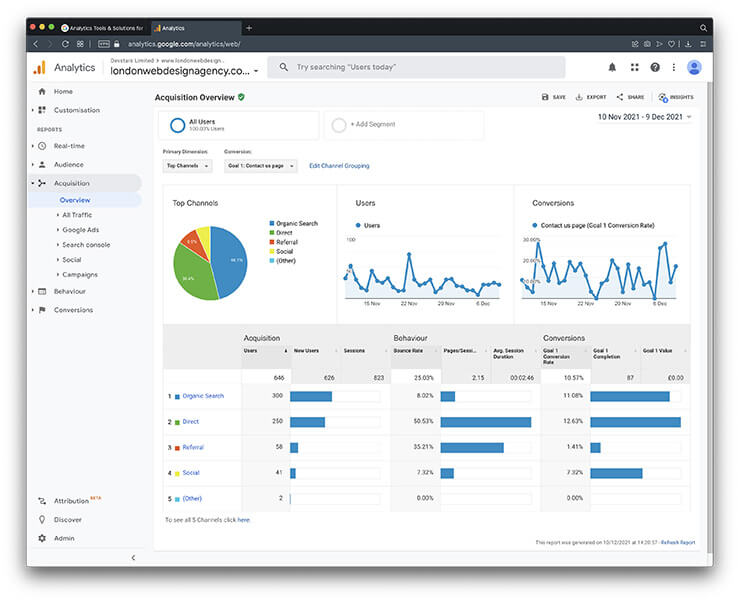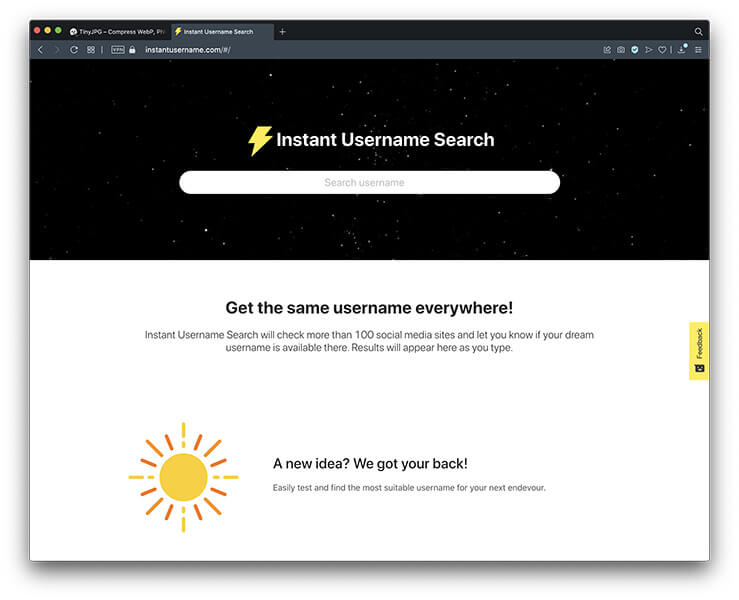
Article
SEO Strategy plan for a new website
PUBLISHED:December 10, 2021
UPDATED:April 2, 2024
Launching a new brand or company online comes with the exciting yet crucial task of establishing a robust SEO strategy right from the outset. At LWDA, our expertise lies in assisting numerous entrepreneurs embarking on this journey, offering invaluable insights into the world of Search Engine Optimisation.
Let’s delve into the intricacies of shaping a comprehensive SEO strategy tailored for a brand or company launching a brand new website, or even for one stepping into the online realm for the first time.
Building Your Site Map: Blueprint for Success
The foundational step in the process involves creating a site map, akin to a ‘family tree’ illustrating the hierarchical structure of your website. Visualizing this structure delineates key pages and sections, outlining functionality and basic content types.
Utilizing tools like Gloomaps, we seamlessly generate comprehensive site maps as part of our web design services. This task typically follows an in-depth discussion about the website’s specifics to discern requisite page templates.
Page templates – distinct layouts presenting information – are pivotal. For instance, a ‘Home’ page differs significantly from a ‘Contact’ page, demanding unique design and construction.
Some examples of common page templates are as follows:
- Home
- About Us
- Product Category
- Product Listing
- News Archive – lists all the site news posts in reverse chronological order
- News Post – The article itself
- Contact – may have a map and a form, etc
These are only a few examples. Different types of websites will require different types of pages. For example, an eCommerce store will require product pages, but a B2B website selling service will require service pages and possibly case studies too.
Optimising via Site Mapping for SEO Benefits
The site map’s significance lies in identifying and optimising key web pages. In scenarios like setting up an eCommerce store for a clothing brand, various landing pages cater to diverse products or categories, demanding individual optimization:
- Men’s Jeans
- Women’s Jeans
- Men’s Jackets
- Women’s Jackets
Each landing page necessitates meticulous optimisation. Detailing which pages you require at this early stage will help you with your keyword research, which is the next step of the SEO strategy.
Unlocking SEO Potential Through Keyword Research
Following site mapping, the next stride involves diving into keyword research. Each web page mandates a title and descriptive text pivotal for user comprehension and search engine relevance.
Keyword research facilitates aligning web content with user search intent. For instance, in service-based businesses, detailed content allows encompassing a spectrum of relevant keywords, broadening audience outreach.
Exploring Keyword Research Techniques
Numerous tools like SEMrush aid in high-end keyword research and competitor analysis. However, cost-effective alternatives include leveraging Google predictive search—a treasure trove of user-generated search terms.
Simultaneously, studying competitor websites aids in identifying potential keywords, organised methodically for effective incorporation into your website.
Google predictive search
Yup, Google Search – the popular search tool that most of us use every single day – is a great way to perform free keyword research.
Google predictive search, also known as autocomplete or suggested search, is a valuable tool for augmenting your SEO strategy. Leveraging this feature involves utilizing the search bar on Google to generate keyword ideas and understand user search behaviour. By typing in relevant keywords or phrases related to your business or industry, Google suggests popular search terms in real time.
To harness this for SEO, start by entering primary keywords or phrases pertinent to your website’s offerings. Analyze the suggested search terms provided by Google, as these reflect prevalent user queries and interests. Note down relevant and frequently occurring suggestions to expand your keyword repertoire.
For example, if you are planning to sell men’s jeans online, you may wish to consider including category pages for different styles and brands such as those shown in this predictive search screenshot.
Utilize these insights to refine your website’s content strategy and optimise for specific search queries. Tailor your content, titles, and meta descriptions based on these keywords to align closely with user intent. Incorporating these predictive search terms seamlessly into your website’s content can enhance its visibility and relevance, subsequently improving search engine rankings.
Regularly revisiting Google predictive search helps stay abreast of evolving user interests and adapt your SEO strategy accordingly, ensuring continued relevance and visibility within search engine results.
Competitor keyword research
If you are starting a new online business, or even re-launching an existing one, it’s good to know who your main competitors are.
You may already know of a few competitors that offer the same services or products, so visit their websites to see what content and keywords they feature on their site especially if they rank higher than you.
Make a list of keywords that you feel may be of use. Our advice is to create a spreadsheet to record this information, organised by page/section title, often referred to as a Google Keyword Planner.
You can then use these keywords to perform Google searches which will identify other competitors that you may not have been aware of.
Take special note of those on pages one and two of Google. Visit those websites and perform the same tasks as you did for your other competitors.
The resulting list of keywords will give you a good foundation for creating the titles and text for the web pages on your website.
Text Optimisation: Crafting SEO-Driven Content
Armed with a keyword repertoire, the focus shifts to composing website content. Each page hosts unique text targeting specific keywords, presented in reader-friendly, digestible formats.
The easiest content elements to write are usually the page titles, browser titles and meta descriptions. These are short statements which generally require less effort. It’s the more detailed content that can be challenging, such as product descriptions, detailed case studies and news stories that are relevant to your products or services.
Avoid long paragraphs of text. This is because it’s quite difficult to read large blocks of text on screen, so stick to shorter sections of text that are easier for the human eye to track and for the brain to digest.
Make sure that you include subheadings throughout your text. This helps structure the page for both the user and Google and allows you to use more keywords.
If you are short of time or just don’t like the idea of writing your content, there is help at hand…
Effective Content Writing for SEO
A strategic approach to content creation often involves utilising online tutorials for SEO-centric content structure, installing website plugins such as Yoast for WordPress, or employing the services of a copywriter to help craft your website content. All three methods will likely for a part of your on-page optimization strategy, so let’s look into each one of those methods in more detail…
SEO Content Tutorials
Implementing a strategic content creation process often utilises online tutorials focusing on SEO-centric content structure. These tutorials serve as educational resources, imparting insights into the art of optimising content for search engines while catering to user intent. They typically cover various facets, including keyword research, effective headline crafting, content organisation, and leveraging online SEO tools.
By delving into these tutorials, website owners and content creators grasp fundamental and advanced SEO principles, learning how to align content with specific keywords and user queries. This knowledge helps in creating more targeted, relevant, and discoverable content.
Moreover, understanding SEO-centric content structure aids in enhancing website visibility, increasing the likelihood of ranking higher in search engine results pages (SERPs). This strategic approach not only elevates SEO performance but also fosters user engagement, ensuring that the content resonates effectively with the intended audience.
There are plenty of great online tutorials for writing website content, so have a read through a few of them before you start writing yours.
Hiring a Website Copywriter
A well-crafted content strategy for SEO often involves more than just following online tutorials. While tutorials aid in understanding SEO-centric content structures, the complexities of effective content creation often necessitate professional assistance. Hiring a skilled website copywriter proficient in SEO optimisation can significantly elevate content quality and search engine visibility.
A competent website copywriter possesses expertise in weaving relevant keywords seamlessly into content while maintaining readability and engagement. They comprehend the nuances of crafting compelling headlines, incorporating strategic subheadings, and structuring content for user-friendly readability. Furthermore, a proficient copywriter adeptly integrates keywords into the copy without compromising the natural flow of the text, optimising it for humans and search engines alike.
SEO Plugins
SEO plugins such as Yoast offer valuable assistance in optimising content for improved SEO by providing user-friendly tools and actionable suggestions. Yoast simplifies the optimisation process by offering real-time feedback and recommendations while creating or editing content within WordPress.
This plugin evaluates various aspects crucial for SEO, including readability, keyword density, meta tags, and content structure. It guides content creators in crafting SEO-friendly titles and meta descriptions and ensures adequate keyword usage throughout the content. Additionally, Yoast helps in enhancing readability by suggesting improvements in sentence structure, paragraph length, and the use of subheadings.
By offering clear guidelines and visual cues, Yoast empowers users to adhere to SEO best practices effectively. Its intuitive interface and straightforward suggestions enable even novice users to comprehend and implement essential SEO optimisations, ultimately contributing to improved search engine rankings and better visibility for the website’s content.
Domain Name and Web Hosting: Strategic SEO Elements
Strategically selecting a domain name, potentially encompassing keywords beyond the company name, opens avenues for enhanced SEO. Moreover, choosing quality web hosting significantly impacts site speed—a pivotal SEO factor.
Choose a good domain name
Your domain is another opportunity to target keywords other than your company name, especially if your company name consists of common words that are likely already registered by other companies.
A good example of this is De Havilland Gin. The brand is known as De Havilland and inspired by the plane of the same name. The downside of this is that there will be many websites online that include these words within the domain name. But combine the brand name with the main product name and the result is a unique search term that combines two keywords.
Top Tip: Don’t be afraid to register multiple domains if you wish to keep your options open. And even if you are sure about your company name and the associated domain, make sure you register more than the .co.uk or the .com. Our advice is to protect your brand as much as possible by registering multiple domains. This makes it harder for other companies to impersonate your brand online or piggyback on your success by launching a company selling similar products or services.
Choose a good web hosting solution
Good quality web hosting is important on many levels such as security and minimising downtime, but in terms of SEO, it’s all about site speed.
Websites that are fast to load will be looked upon favourably by search engines such as Google. So choosing a hosting solution that delivers your web pages quickly using a CDN (Content Delivery network) should be a top priority.
It’s not easy to choose a good web hosting company. We have spent many years testing various services to provide our clients with what we feel is the best all-around hosting solution.
Our tip is to secure a hosting solution that’s based within the country of your target market, has excellent customer support and offers regular backups.
Optimize Page URLs
Optimising Page URLs
Tweaking page URLs so that they feature some of your top keywords is a great way to boost your SEO. A good example of this is our long-standing client Mini-Engineers. Yvette invested a little time researching keywords that would help boost the SEO of her pages and added some of those keywords to her Page URLs before launch.
For example, the page that promotes Parties could well have been structured as follows:
https://www.mini-engineers.com/parties
But because Yvette was targeting customers specifically within London, the final URL for the page looked like this:
https://www.mini-engineers.com/lego-parties-in-london/
The keywords in the URL are also reflected within the H1 (main heading) on the page and throughout the copy.
It’s important to make these changes before launch. The reason for this is that Google and the other search engines will index your page URLs and use those for search results. If the URLs change at any point in future, it will take Google quite some time to update their records and any other inbound links to your site will not work.
If you must change a page URL after launch, you can set up a 301 redirect, but it’s best to avoid this if possible.
Optimise meta titles and descriptions
Optimise meta titles and descriptions
With your page URLs and page content optimised, you should now optimise the meta title and meta description for each page.
Meta titles and descriptions are the text items you see directly under the URL in a Google search result. The meta title is the blue text that acts as the link to your website and the description is the dark grey text below that.
Usually, this data is taken directly from your page title (H1) and the first line of text on the page, but using that text as it stands may not be best from a marketing perspective.
As previously mentioned, WordPress plugins such as Yoast allow you to tweak the text that appears in the SERPs (Search Engine Results Pages) to make it more attention-grabbing for the user. Essentially the idea is to write titles and descriptions that make the viewer want to click your link and not someone else’s.
Make sure that the title and descriptions feature the main keyword for that page and this will boost to your SEO efforts.
Optimise your images
It’s not just the text that can be optimised on your website. You can optimise your images too. Both in terms of image size and metadata.
All types of image formats can be optimised, including JPEG, GIF, PNG and SVG.
Optimise image file sizes for fast page loading
As mentioned in the hosting section, page load speed is a very important factor when it comes to SEO. The quality of your hosting package will go a long way to helping you serve your website to your visitors quickly, but reducing image file sizes will give you an extra boost.
Make sure that you don’t upload images that are too big in terms of width and height. Get to know your pixels vs cm or inches and only upload images that are the right size of the job required.
Also, don’t upload print-resolution images. Images that are meant for print are usually 300dpi (dots per inch), whereas web images can be as low as 72dpi (low-resolution screens), and certainly no more than 144dpi (high-resolution screens). Use an image editor such as Photoshop or Affinity Photo to edit the size and dpi of your images before you upload them to your website.
lastly, there is the issue of image compression. Compression is about how much data an image editor will remove from an image to reduce the file size in terms of KB or MB (kilobytes or megabytes). The idea is to get the file size as low as possible whilst retaining a good amount of detail.
Our tip is to use your image editor to export images using a setting that retains a good amount of detail, and then pass those images through an online tool such as tinyjp.com which will compress the images further without losing detail.
Optimise your image metadata
Not only can you optimise the metadata for your web pages, but you can also add metadata to your images in the form of ‘alt text’.
Image Alt Text is a description of the image that you are adding to the page and helps improve accessibility for those with poor eyesight who use a screen reader to help them navigate a website.
Search engines can read alt text, adding it to the overall ranking factor of your web pages. So make sure that you add some keywords to your images’ alt text field when you upload them to your websites’ CMS (Content Management System).
Setup Google Analytics & Google Search Console
Once your website is built and the content has been fully optimised, make sure you set up Google Analytics and Google Search Console so that you can track the effectiveness of your efforts.
Google Analytics & Search Console allow you to see which keywords are bringing traffic to your website and your average ranking for those keywords. Both are powerful tools for understanding who your visitors are, where they are coming from and which pages they visit.
You can also use Search Console to identify technical issues that may arise with the site over time, enabling you to identify problems and have them fixed quickly.
Off-site SEO optimisation strategies
Finally, you’ll need to consider some off-page optimization in the form of a social media and link-building strategy.
Social Media’s Role in SEO Expansion
Leveraging social media platforms not only direct traffic to your site but also augments brand visibility and engagement, capitalising on appropriate hashtags to reach the target audience.
Each social media channel offers the ability to send traffic directly to your site using a range of methods such as:
- links in your bio
- Sponsored Posts
- Manual posts made by you (stills, reels, etc)
- Content that other users have shared from your platform, website or about your brand/products in general
As a part of your social media marketing plan, we suggest that you set up an account for all of the big social media platforms including Facebook, X (Twitter), Instagram and YouTube. Plus any others that you feel may be relevant to your audience such as TikTok.
Even if you decide not to use them, by registering your business on these platforms you are protecting your brand. Particularly if you can get a great account name across all platforms that is the same or similar to your web domain.
Social media is here to stay and is an essential tool for connecting to potential customers, especially if you are a B2C brand. So start utilising social media as part of your off-page SEO strategy to maximise the reach of your brand.
Link Building Tactics
Quality backlinks serve as an essential pillar in any effective SEO strategy. These links, earned from reputable and relevant sources, significantly impact a website’s authority and credibility.
Implementing ethical link-building tactics involves seeking connections with high-quality websites, fostering genuine relationships, and providing valuable content.
Guest blogging, creating shareable content, and participating in industry forums are effective methods for acquiring authoritative backlinks. However, it’s crucial to prioritize quality over quantity, ensuring that acquired links come from trustworthy sources and align with the website’s niche.
Ethical link building not only enhances a site’s search engine rankings but also establishes it as a reliable and valuable resource within its industry, fostering long-term success and trust among both users and search engines.
We wrote a complete article about How to get backlinks for my website here.
Task Allocation for Effective SEO Implementation
Distributing responsibilities—from site mapping to content creation, and social media strategy—optimises SEO efforts, either by self, web developers, or a specialised SEO expert.
While navigating the multifaceted domain of SEO may seem daunting, breaking it down into manageable tasks enables effective website optimisation. Should you require guidance or hands-on support in crafting an SEO plan for your new website, our team at LWDA stands ready to assist. Whether amalgamating SEO services with web design or seeking independent SEO expertise, our aim remains the success of your online presence.
SEO Strategy Plan Summary
SEO (Search Engine Optimisation) is a complex subject and can seem daunting at first. But if broken into smaller tasks, you can optimise your website without needing to pay someone else to perform the task.
However, if you don’t have time to invest in this part of the project, then help is at hand from your digital partners.
It’s possible to divide your SEO strategy into stages, with each one being executed either by yourself, your web developer or a specialist SEO agency.
Here’s a summary of tasks and who may be best suited for each:
- Create your site map – You or your web developer
- Keyword Research – You or an SEO specialist
- Optimising on-page text – You or a copywriter
- Choosing a good domain name – You or your developer
- Choose a good web hosting company – Your web developer
- Optimise page URLs – You, your developer or an SEO specialist
- Optimise meta titles and descriptions – You, your developer or an SEO specialist
- Reduce image file sizes – You or your web developer
- Setup Google Analytics & Search Console – Your or your web developer
- Social Media Strategy – You or a specialist Social Media Agency
We’re used to helping clients with their SEO requirements, and will often take care of the essentials. We regularly create site maps, set up web hosting, optimise meta titles and descriptions during development review, optimise images and set up Google Analytics and Search Console.
We’re also on hand to assist with keyword research and can help with competitor analysis too.
If you’re looking to have a website designed and built for your new company or brand and need help creating an SEO strategy, feel free to drop us a line. We’ll be more than happy to discuss your project.
If you prefer to use a separate agency for your SEO services from your web design & development services, then we suggest taking a look at this article about outsourcing seo services.
LWDA are a London-based Web Design Agency that serves London and the UK. If you are a reader from another territory such as the US, you may wish to use directory services such as DesignRush to find Local SEO Agencies.
New Website SEO: FAQ
SEO is pivotal for a new website as it establishes visibility, attracts organic traffic, and builds credibility.
On-page SEO includes optimizing content, meta tags, headings, and internal linking for better search engine rankings.
Mobile-friendly optimization enhances user experience, positively affecting SEO by improving rankings.
Compelling content creation, incorporating relevant keywords, is crucial for engaging users and search engines alike.
Local SEO helps businesses target local markets effectively, driving relevant traffic and potential customers.
Measuring SEO success involves tracking metrics using tools like Google Analytics to assess website performance and make informed decisions.
SEO Strategy: Additional Reading
If you found this article helpful and would like to know more about SEO, feel free to check out these posts too.


